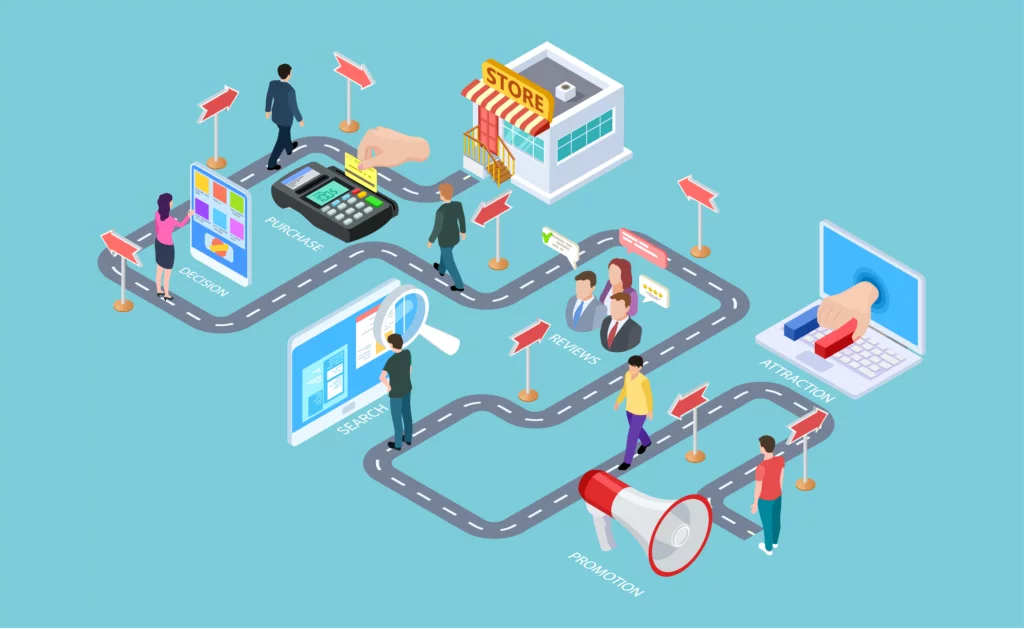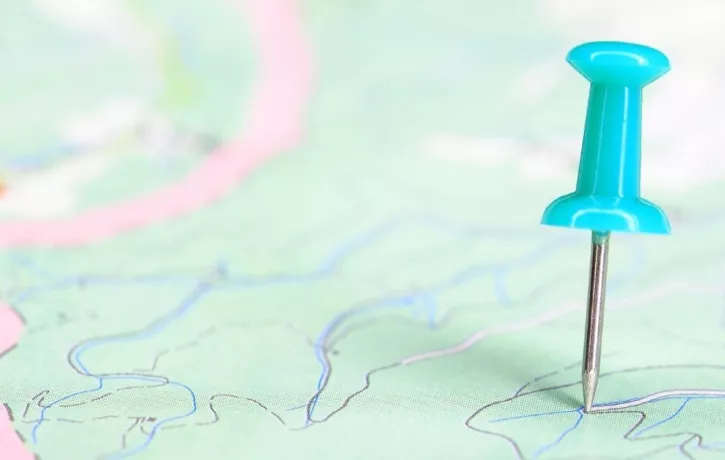A journey map can be a useful tool for product creators, software developers, marketers, and anyone else who wants to improve the customer experience.
Among other things, journey maps are used by product teams to improve product adoption, better understand customer needs, and boost important customer metrics, such as engagement and retention.
Below, we’ll learn what journey maps are, then outline a basic structure that can be followed when designing a journey map.
What is a journey map?
Journey maps are timelines, or stage-based roadmaps, that diagram a customer’s interactions with a product, service, or brand.
There are several reasons why product teams use these maps:
- Well-crafted maps act as a communication tool that help team members stay in sync and deliver a consistent user experience
- Journey maps provide detailed insights into customer mindsets, behaviors, and needs at each stage of the journey
- Ultimately, journey maps help product teams create product experiences that are more valuable and profitable
These maps can cover the entire journey a customer has with a brand or only one portion of that engagement. The design and scope of the journey map will depend directly on the needs of the person or team designing it.
Here are a few components commonly included in a journey map:
- A narrative description of the customer persona
- Other relevant details about the customer segment, such as demographics
- Touchpoints along the journey in question
- The customer’s goal at each touchpoint
- The product team’s goal at each touchpoint
Most journey maps take an approach similar to this one, but it should be remembered that there is no single “right way” to create one.
Instead, journey maps should be customized to meet the needs of those who are building them. Those needs can act as guiding principles, which will help teams incorporate the content that is most useful and relevant to them.
Now we’ll look at a general outline of the product adoption process, beginning with the very first moment customers come into contact with a brand.
What does a journey map look like?
Here is a top-down overview of the customer journey from the first moment of contact through long-term adoption and relationship management:

Stage 1: The pathway to purchase
The first stage of the journey revolves around marketing. Customers first become aware of their problem, then begin researching solutions and products that will solve that problem.
During this stage of the customer journey, marketers will focus on generating interest in the product and persuading the customer to take action.
Here is a well-known example of how marketers describe this pathway:
- Attention. Marketers gain customers’ attention through advertising, social media, or other top-of-funnel marketing content.
- Interest. Customers become interested specifically in a particular brand or solution.
- Desire. At this point in the marketing funnel, customers have learned enough about potential solutions to begin preferring one over the others.
- Action. Finally, customers take action by engaging with sales representatives, signing up for a trial, or making a purchase.
This is only one example of how marketers can diagram the pathway to purchase.
There are other models and touchpoints that can be included in this part of the customer journey. The zero moment of truth, for instance, refers to the moment when customers become aware of a product or service prior to the seller’s knowledge.
Regardless of how this part of the journey is mapped out, it typically ends with the purchase, which marks the beginning of the next stage in the journey.
Stage 2: Purchase and onboarding
Once the customer has taken a specific action, such as signing up for a software trial, the journey map will cover the next stage in the adoption process, user onboarding.
Naturally, this stage of the journey map will vary depending on the business, the product, and the customer pathway being mapped out.
Here are examples of touchpoints that might be included in a journey map for a digital product:
- Conversation with sales representatives
- Signing up on the website
- Automated product tours via digital adoption platforms (DAPs)
- Follow-up via email and/or phone
As with every other stage on the journey map, each of these touchpoints should contain information that is useful and actionable, such as goals and tasks that urge customers forward through the journey.

Stage 3: Retention and development
Onboarding is a crucial stage in the customer journey and has a direct influence on product adoption and the customer’s future relationship with the brand.
However, purchase and onboarding are only the beginning of that relationship.
To maintain a healthy and profitable relationship with customers, it is important to focus on other areas, such as:
- Long-term training and development
- Ongoing customer care
- Technical support
As with the other stages covered above, journey mapping and proactive improvement to the customer experience can have a significant impact on customer relationships, digital adoption metrics, bottom-line profitability, and more.

